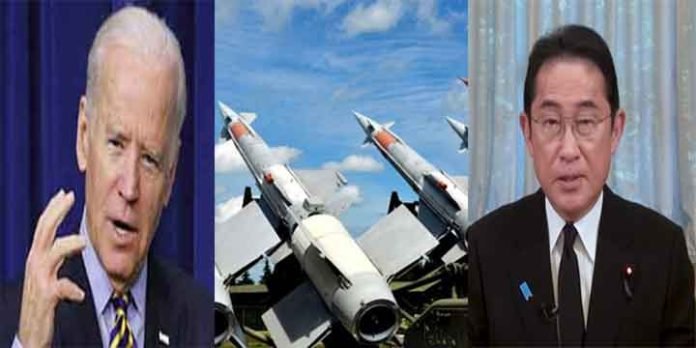INVC NEWS
Washington : Explore the complexities of hypersonic missile interception and how the US-Japan partnership aims to counter the swift and agile threats posed by these advanced weapons. Delve into the technological advancements and global security implications of this collaborative endeavor .
The United States and Japan have embarked on a groundbreaking collaboration to jointly develop a hypersonic missile interceptor system. This strategic alliance aims to counter the growing threat posed by hypersonic missiles, a technology that has raised the stakes in modern warfare due to its unprecedented speed and maneuverability.
The Urgent Need for Hypersonic Missile Defense
Hypersonic missiles, emerging as the new frontier in missile technology, present a formidable challenge to traditional defense mechanisms. Unlike ballistic missiles that follow predictable trajectories, hypersonic missiles possess the capability to alter their course mid-flight, making interception a highly complex task. With speeds exceeding five times the speed of sound, these missiles can reach their targets with unparalleled rapidity, rendering them incredibly difficult to detect and neutralize.
The Collaborative Agreement
Reports suggest that a pivotal agreement to develop a joint hypersonic missile interceptor system was reached between the United States and Japan in January. This accord was forged following a high-level meeting between US Secretary of State Antony Blinken, Mr. Jake Sullivan, Japan’s Foreign Minister, and National Security Advisor. This strategic partnership underscores the shared commitment of both nations to bolster their defense capabilities and safeguard their territories from the evolving threats of the modern world.
Challenges and Innovations
Designing an effective hypersonic missile interceptor system requires overcoming several technical challenges. The dynamic nature of hypersonic missiles demands innovative tracking and targeting mechanisms that can swiftly respond to changes in flight trajectory. The system must also possess the capability to discern genuine threats from decoys, a task that demands advanced artificial intelligence and sensor technologies.
The Significance of the Camp David Summit
The upcoming Camp David Summit between the Japanese Prime Minister and American officials holds immense significance as the forum for the official announcement of the hypersonic missile interceptor project. This summit serves as a testament to the diplomatic ties between the two nations and highlights their dedication to addressing the evolving threats posed by hypersonic missile technology.
Pioneering Long-Range Missile Technology
It’s important to note that this collaborative endeavor is not the first instance of joint missile technology development between the US and Japan. Both nations have previously worked together to create long-range missiles capable of striking targets from space. Notably, Japan has integrated these advanced missile systems into its naval arsenal, reinforcing its strategic positioning in the Korean Peninsula.
Global Landscape and Strategic Imperatives
Amidst this evolving scenario, the US Intelligence Agency’s Chief Scientist underscored the pivotal role played by China and Russia in hypersonic missile research. China, in particular, has amassed a significant number of hypersonic missiles, prompting the United States to invest substantially in its hypersonic capabilities. A report by Voice of America highlighted the US’s commitment to allocating $15 billion, equivalent to approximately 1 lakh crore rupees, for hypersonic missile research between 2023 and 2027. This investment underscores America’s dedication to maintaining its technological edge in missile defense.
Research and Development for Enhanced Security
In tandem with its research on hypersonic missiles, the United States is actively engaged in developing advanced defense systems to counter these threats. Presently, the Patriot Defense System serves as a security cover across 17 countries, including Ukraine. This underscores America’s ongoing commitment to global security and its proactive approach to safeguarding its allies against emerging threats.
The Road Ahead
As the collaboration between the United States and Japan materializes into a concrete hypersonic missile interceptor system, it heralds a new era in defense cooperation. This partnership signifies the unity of purpose shared by both nations in the face of evolving security challenges. The fusion of technological innovation, diplomatic collaboration, and strategic foresight positions this endeavor at the forefront of modern defense initiatives.












